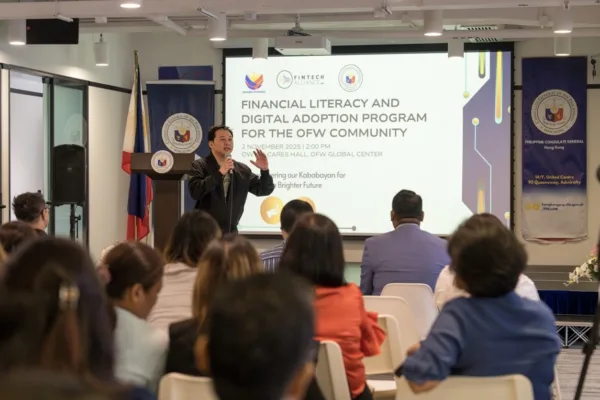Foreign direct investment (FDI) into the Philippines recorded net inflows of US$498 million in March 2025, 1 reflecting a 27.8 percent decline from the US$689 million logged in the same month last year, according to data released by the Bangko Sentral ng Pilipinas (BSP).
The drop in FDI was driven by lower net inflows across all major investment components, highlighting investor caution amid a complex global economic environment.

In particular, nonresidents’ net investments in debt instruments — which include intercompany loans between foreign investors and their Philippine affiliates — fell by 31.6 percent, down to US$329 million from US$481 million in March 2024. 2
Likewise, equity capital placements (excluding reinvested earnings) dropped by 27.4 percent, settling at US$102 million compared to US$141 million a year ago. Reinvested earnings also saw a slight dip of 1.2 percent, totaling US$66 million, down from US$67 million in the same period last year.

Despite the decline, the BSP noted that equity capital continued to flow in from key investment partners, primarily Singapore, Japan, the United States, South Korea, and Malaysia. These funds were funneled into critical sectors of the economy, including real estate, manufacturing, financial and insurance services, and administrative and support services.
The March performance capped a weak first quarter for FDI, with total net inflows for Q1 2025 reaching US$1.8 billion, a sharp 41.1 percent decrease from the US$3.0 billion posted in the first three months of 2024. 3

Global and domestic factors at play
Economists point to a range of factors behind the slowdown. Globally, elevated interest rates, geopolitical tensions, and lingering supply chain concerns have made investors more cautious in deploying capital abroad.
Domestically, while the Philippines continues to benefit from a young labor force and a growing middle class, concerns around infrastructure gaps, regulatory risks, and bureaucratic inefficiencies continue to affect investor sentiment.
“Foreign investors are recalibrating,” said a Manila-based economist. “They’re becoming more selective and are looking for strong fundamentals, long-term policy clarity, and efficient ease of doing business. These latest numbers are a wake-up call.”
Understanding the numbers

The BSP clarified that its FDI statistics are based on actual flows and adhere to international standards, specifically the Balance of Payments and International Investment Position Manual, 6th Edition (BPM6). This method counts only those foreign investments where the investor holds at least a 10 percent stake in a local enterprise.
This sets BSP’s figures apart from investment data published by the Philippine Statistics Authority (PSA), which tracks approved investments based on commitments submitted to Investment Promotion Agencies. The PSA numbers, while indicative of interest, do not necessarily translate into realized investments within the same period and do not account for withdrawals or meet BPM6’s ownership threshold.
Looking ahead
Despite the slower first quarter, the BSP and the government remain optimistic about medium- to long-term FDI prospects. Ongoing reforms such as the Corporate Recovery and Tax Incentives for Enterprises (CREATE) Act, liberalization of key sectors, and digital transformation initiatives are seen as catalysts to attract more sustainable foreign investments.
In the near term, analysts say a rebound will depend on improving investor confidence through continued economic stability, infrastructure rollout, and responsive governance.
As the Philippines aims to compete regionally in Southeast Asia for capital inflows, policymakers are being urged to double down on reforms, fast-track strategic projects, and maintain a transparent business environment.
As one analyst noted, “FDI isn’t just about capital, it’s a signal of trust in a country’s future.”
—
1 BSP statistics on FDI are compiled based on the Balance of Payments and International Investment Position Manual, 6th Edition (BPM6). FDI includes investment by a nonresident direct investor in a resident enterprise, where the equity capital in the latter is at least 10 percent. It also includes investment made by a nonresident subsidiary or associate in its resident direct investor. FDI can be in the form of equity capital, reinvestment of earnings, and borrowings.
2 Net investments in debt instruments consist mainly of intercompany borrowing and lending between foreign direct investors and their subsidiaries or affiliates in the Philippines. The remaining portion of net investments in debt instruments are investments made by nonresident subsidiaries or associates in their resident direct investors. This is known as reverse investment.
3 BSP FDI statistics are different from the investment data of other government sources. BSP FDI covers actual investment inflows. In contrast, the approved foreign investments data published by the Philippine Statistics Authority (PSA) are sourced from Investment Promotion Agencies (IPAs). These represent investment commitments, which may not necessarily be fully realized in a given period. Furthermore, the PSA data are not based on the 10-percent foreign ownership criterion under BPM6. Additionally, the BSP’s FDI data are presented in net terms (i.e., equity capital placements less withdrawals). On the other hand, the PSA’s foreign investment data do not account for equity withdrawals.








